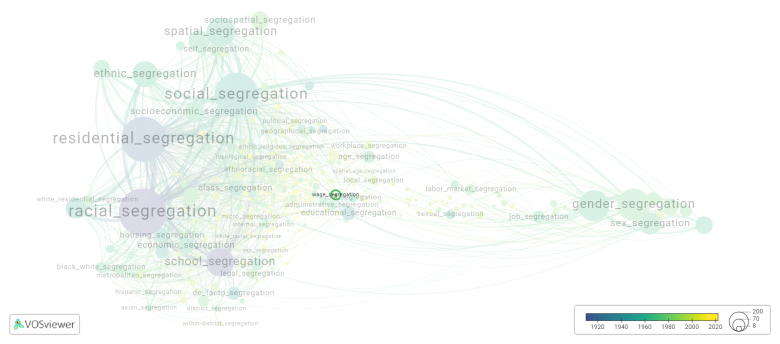Wage segregation
Date and country of first publication[1]
1986
United States
Definition
Wage segregation refers to the disparity in earnings between different groups of people, often based on their gender, race, or other characteristics. It refers to the unequal distribution of wages, where certain groups consistently earn less than others for similar work or comparable qualifications. This can lead to economic inequality and hinder the progress towards equal opportunities and fairness in the workplace. Wage segregation is often the result of discriminatory practices, biases, and systemic inequalities within society.
See also
Related segregation forms
Wage segregation is frequently discussed in the literature with the following segregation forms:
Visualization based on the research
For the complete network of associated segregation forms, see:
- First year of publication https://tinyurl.com/2235lkhw
- Louvain clusters https://tinyurl.com/2d8wg5n3
- Betweenness centrality https://tinyurl.com/223udk5r
- Disciplines where segregation forms first appeared https://tinyurl.com/244d8unz
References
Notes
- ↑ Date and country of first publication as informed by the Scopus database (December 2023).
At its current state, this definition has been generated by a Large Language Model (LLM) so far without review by an independent researcher or a member of the curating team of segregation experts that keep the Segregation Wiki online. While we strive for accuracy, we cannot guarantee its reliability, completeness and timeliness. Please use this content with caution and verify information as needed. Also, feel free to improve on the definition as you see fit, including the use of references and other informational resources. We value your input in enhancing the quality and accuracy of the definitions of segregation forms collectively offered in the Segregation Wiki ©.
Wage segregation appears in the following literature
Moore H.A., Ollenburger J.C. (1986). What Sex is Your Parachute?: Interest inventory/counseling models and the perpetuation of the sex/wage segregation of the labor market. Work and Occupations, 13(4), 511-531. https://doi.org/10.1177/0730888486013004004
McCann R.J., Trokhimtchouk M. (2009). Optimal partition of a large labor force into working pairs. Economic Theory, 42(2), 375-395. https://doi.org/10.1007/s00199-008-0420-2

